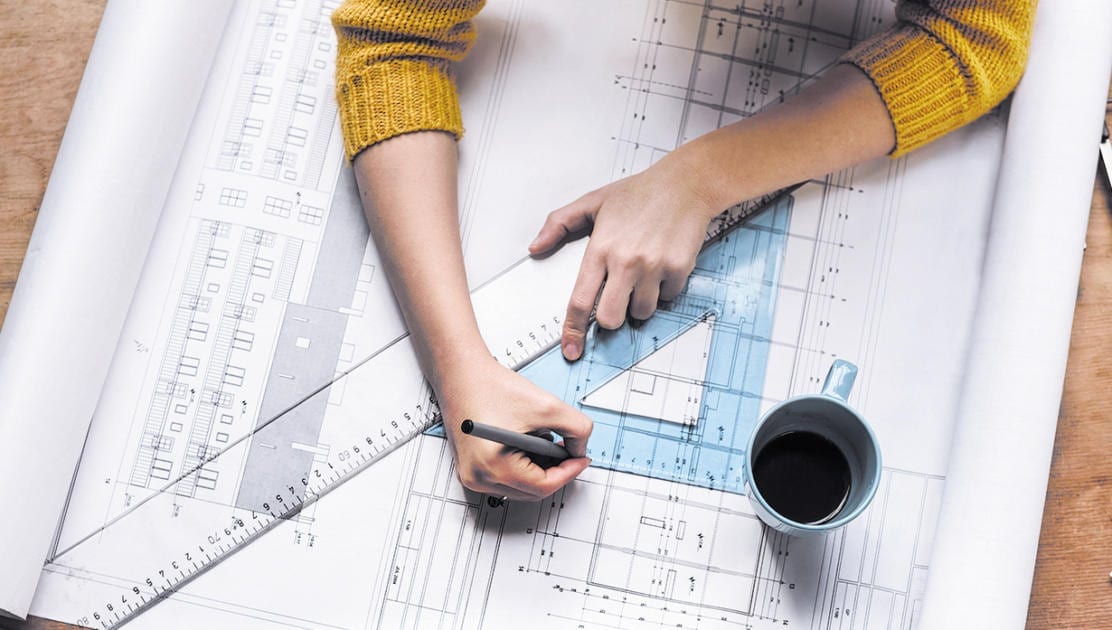Design on the Brain
Combining Neuroscience and Architecture
By Emily WinerThe term “neuroarchitecture” may sound like an industry buzzword, but in the rapidly evolving and intersecting world of technology, science, and design, it’s an idea worthy of greater attention. This burgeoning field applies the scientific rigor of neuroscience to the world of design, seeking to better understand how humans perceive and experience built spaces at a biological level. The ultimate aim is to then extract findings that can then be practically applied, lending a scientific backing to designing environments that positively shape the user experience.
A brief history
The modern study of neuroarchitecture has the potential to furnish the formulas needed to design most efficiently for human health and happiness. While the scientific study of the impact of the built environment on the brain is relatively new, the underlying relationship between the mind and architecture has been of intrinsic interest to designers throughout human history.
In fact, humans have been unknowingly tapping into principles of neuroarchitecture for thousands of years. The story of Jonas Salk, creator of the polio vaccine, illustrates this point. After years of struggling to find the cure for polio in his laboratory in Pittsburgh, PA, Salk decided to take refuge at the Basilica of San Francesco d’Assisi, a 13th century Franciscan monastery. It was at this quiet abode where he cleared his mind and discovered the cure for polio. Salk attributed his monumental finding to his surroundings-the monastery and its design.
Why neuroarchitecture matters
Neuroarchitecture seeks to answer questions that have the potential to positively impact human health and the human experience on a large scale. As research expands, we may be able to have a greater scientific understanding of, for example, which types of spaces maximize learning for elementary-aged children, best foster healing for patients in a hospital, or support the needs of individuals with Alzheimer’s or autism. The application of neuroscience to architecture is unique in that it provides the scientific tools and technology needed to study the relationship between humans and the built environment. With this ever-expanding understanding of how and why humans react to environmental stimuli in built spaces, findings in neuroarchitecture will increasingly inform design strategies and decisions.
Where technology fits in
Technology plays a key role in the future of neuroarchitecture. Leading technologies in neuroscience, including human monitoring techniques and auditory and visual virtual reality, have been adapted to fit many of the goals of architecture. Researchers can now study brain activity as people interact with components of the built environment. Wearable electrode caps provide a mobile way to monitor what is going on in the brain, transmitting data wirelessly to a researcher’s computer. When combined with physiological data such as heart rate, these findings reveal information about a person’s mental state, stress levels and learning mechanisms while interacting with the space.
These insights are crucial to a deeper understanding of how an environment can impact concerns like health, productivity, creativity, focus, and feelings of safety. Complementary to these methods of human monitoring, the use of virtual reality in architecture offers a means to test new design approaches and gather objective data. As this field expands rapidly, we will continue to see technology serve as a key tool to strengthen neuroarchitecture’s evidence-based methodology and translate into actionable design strategies.
From the lab to the building
Neuroarchitecture finds itself at the intersection of distinct fields, and as such, demands interdisciplinary collaboration to succeed. In order to harness the potential of neuroarchitecture, research must be applied to real-world projects. For example, while most rooms are rectangular in design, research using virtual reality has found that most people report feeling better in rooms with curved rather than straight edges. This translation of science into evidence-based practice is crucial to advancing the field and creating spaces that are better equipped to fit our modern world and meet its diverse needs.
Design of the future
As the study of neuroarchitecture becomes more robust and solidifies evidence-based best practices, the design field will be better equipped to achieve its original goal of creating spaces that improve human and environmental outcomes. Data used to inform future design will no longer need to be obtained retrospectively from mock-ups or post-occupancy surveys. Instead, imagine a world in which designers can proactively combine information about a building’s context and intended function with knowledge about the human mind to maximize user benefits and well-being. Dr. Eve Edelstein, a neuroscientist, architect, anthropologist, and prominent leader in the field, sees this future as well, stating that, “in a matter of years, it would be unthinkable to plan a building or a city without what we learned from laboratories of human experience.”
The field of neuroarchitecture is rapidly gaining traction. Interdisciplinary study is increasingly driving a coalescence of fields like science, technology, health, and the arts, and embracing this intersection will help propel us into the future of architecture and design, where human health and happiness are placed at the fore.
Emily Winer supports the Standard Development team at the International WELL Building Institute, drawing on her knowledge of the built environment, research, and public health to lead the Mind concept of the WELL Building Standard.
